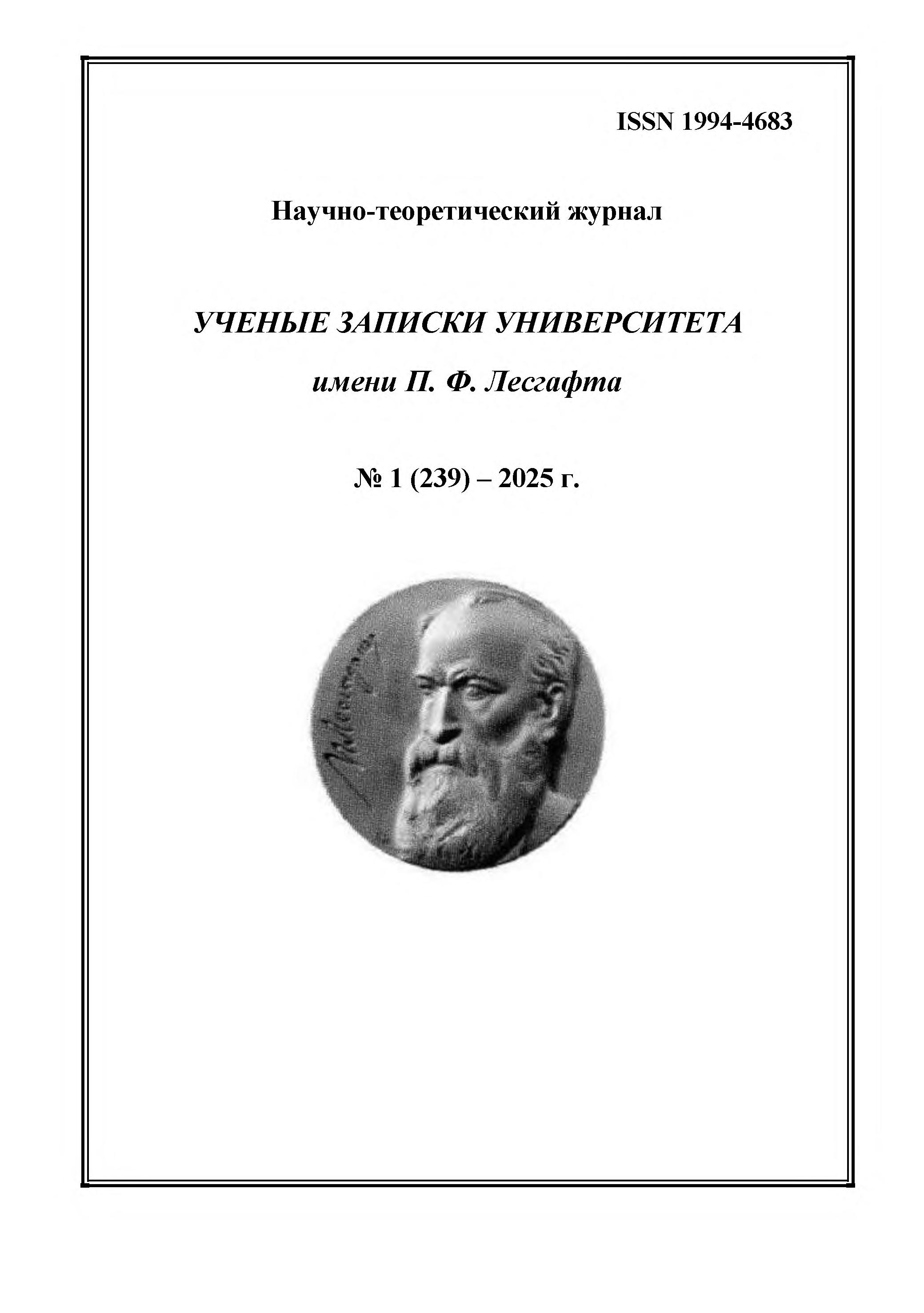Petrozavodsk, Petrozavodsk, Russian Federation
Russian Federation
CSCSTI 14.00
CSCSTI 77.00
The purpose of the study is to analyze the sensory-motor response of blind and visually impaired athletes during the training process in table tennis. Research methods and organization. Research methods: analysis of scientific and pedagogical studies, testing, interviews. The diagnostic tools include tests such as the "falling ruler" test, the Romberg test, the "hit the hoop" test, the "throwing a ball at half strength" test, the "long jump at half strength" test, tremorometry, dynamometry, meter reproduction, and time perception. The study was conducted at the Center for Adaptive Physical Culture of Petrozavodsk State University over a two-year period. The category of participants consisted of twelve athletes aged between 25 and 50 years, who have visual impairments and participate in the Showdown table tennis section. Research results and conclusions. At the final stage of the study, a positive trend in quantitative indicators was observed across all control tests, albeit without confirmation of statistical significance. The participants reported a genuine perception of positive dynamics in their sensory-motor state, enabling them to navigate and overcome obstacles in their daily lives. The final results objectively corroborate the positive development of sensory-motor response among blind and visually impaired athletes during the table tennis training process. Subjective assessments from the participants indicate a beneficial impact of table tennis activities on the quality of daily life for individuals with visual impairments. Combined with a specially designed exercise program, table tennis can serve as both a means for the development of physical and psychomotor skills, as well as a tool for rehabilitation, social integration, and adaptation.
adaptive sports, table tennis, sensory-motor response, visual deprivation, quality of life
1. Khlystov P. A. (2022), “Analysis of the functional-motor state of goalball players”, Bulletin of Tambov University. Series: Humanities, Vol. 27, No. 2, pp. 468–478, DOIhttps://doi.org/10.20310/1810-0201-2022-27-2-468-478.
2. Sharipova L. H., Orzieva M. S. (2018), “State of the function of external respiration and the cardiovascular system in healthy children and in children with visual impairments”, Biology and integrative medicine, No. 5 (22), pp. 23–31.
3. Egorov E. A., Romanova T. B., Rybakova E. G. (2021), “Visual-motor integration: formation, development, role in ophthalmological practice”, RMJ. Clinical ophthalmology, Vol. 21, No. 1, pp. 14–17, DOIhttps://doi.org/10.32364/2311-7729-2021-21-1-14-17.
4. Bloshkina N. M., Vershinin M. A. (2011), “Efficiency of using means of developing the balance function in physical education of children with visual impairments 5-6 years old”, Adaptive physical education, No. 3 (47), pp. 50–52.
5. Demirchoghlyan G. G., Demirchoghlyan A. G. (2000), “Special physical education for visually impaired schoolchildren”, Moscow, Prosveshchenie, 120 p.
6. (2024), “Rules for the sport "sports for the blind" (approved by order of the Ministry of Sports of Russia dated 19.01.2018 N 17) (as amended on 26.02.2024), URL: https://www.consultant.ru/document/cons_doc_LAW_293341/.
7. Mashenzeva T. V. (2013), “Adapted sports games as a means of rehabilitation of blind children (based on table tennis)”, Correctional pedagogy: theory and practice, No. 4 (58), pp. 49–50.
8. Stanchik T. I., Yastrebova O. S. (2022), “Prospects for the introduction of table tennis for the blind "Showdown" into physical education and sports activities at the university”, World Student Games: history, modernity and development trends, Proceedings of the I International Scientific and Practical Conference on Physical Culture, Sports and Tourism, Krasnoyarsk, September 16-17, 2022, Krasnoyarsk, Siberian Federal University, pp. 125–128.
9. Spesivtseva O. I., Kondakova O. N. (2018), “Features of communicative interaction of blind tennis athletes in the training process”, Scientific Notes of P. F. Lesgaft University, No. 12 (166), pp. 345–349.
10. Nekhoroshkova A. N., Gribanov A. V., Deputat I. S. (2013), “Relationship between qualitative parameters of intellectual and visual-motor tests in anxious children”, Bulletin of the Northern (Arctic) Federal University. Series: Medical and Biological Sciences, No. 1, pp. 46–54.
11. Volokitina T. V., Zotova A. A., Popova E. V. (2014), “Visual perception and features of sensorimotor reactions in children aged 7-8 years with strabismus and amblyopia”, Human ecology, No. 4, pp. 39–44.
12. Ilyin E. P., Umnov V. P. (1976), “On the specificity of indicators of the speed of visual-motor reactions”, Psychomotoric, Collection of scientific papers, Leningrad, Leningrad State Pedagogical Institute named after A. I. Herzen, pp. 44-45.







